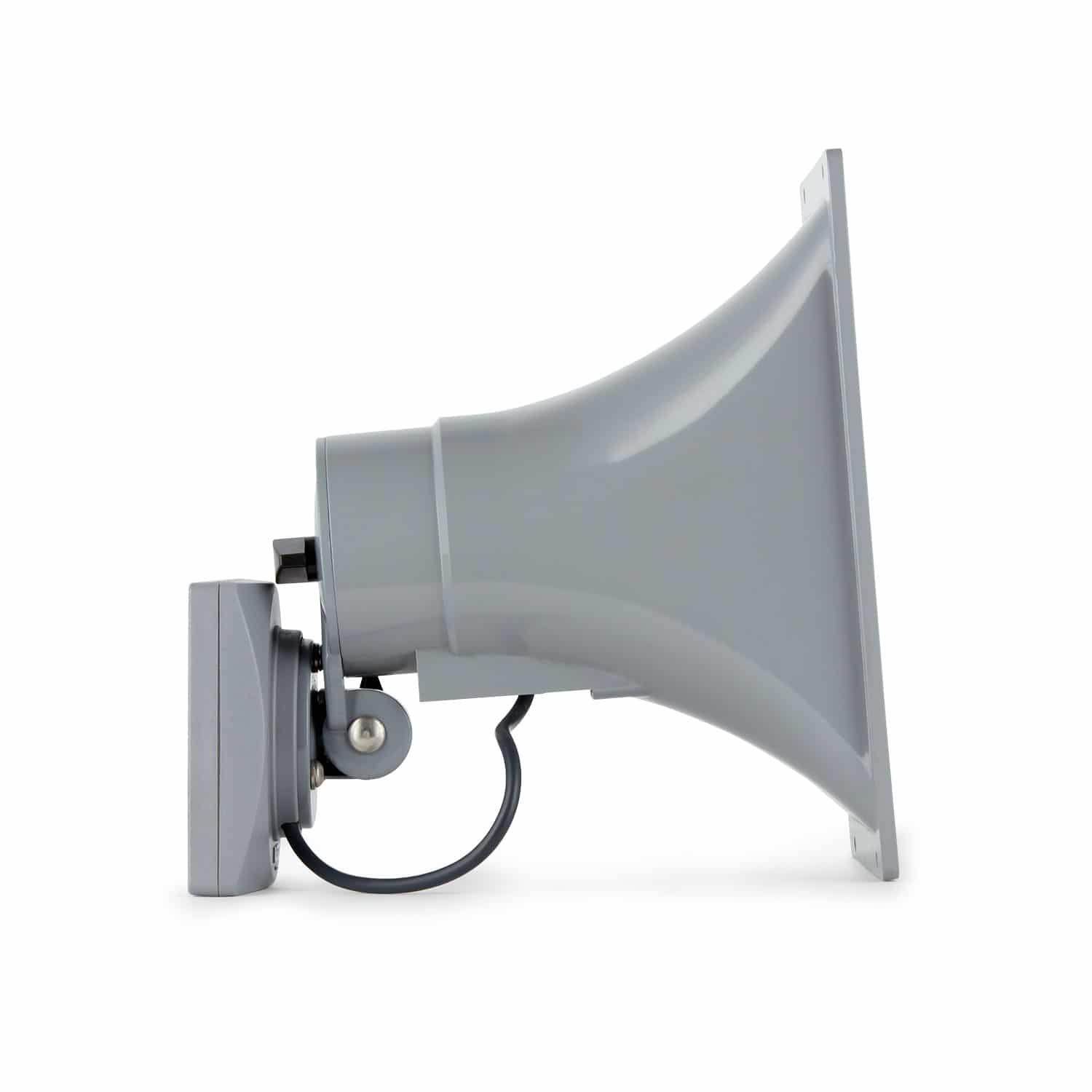Description
For large deployment of IP horn speakers in applications such as warehouses, factories, or large industrial sites, the 8196 can provide significant savings when combined with 1196 satellite speakers. For applications with high ambient noise, heavy machinery, or where ear protection is commonly worn the 16W of audio power provided by the 8196 alone when PoE+ powered provides ample sound levels to maintain high intelligibility.
Satellite speakers are connected to the 8196 in a daisy chain fashion using CAT5/CAT6 standard patch cables. Each 1196 Satellite Speaker attached is detected by the 8196 IP Speaker automatically and can be monitored for connectivity. The number of attached satellite speakers is displayed in the 8196 web GUI and also visible in the 8300 Supervision Controller, if deployed.
Power is automatically shared equally between the 8196 IP PoE+ Horn Speaker and 1196 satellite Speakers. If 16W of audio power is available then with one satellite speaker 8W is available to each speaker. If three satellite speakers are attached then 4W are available to each speaker. As satellite speakers are attached the maximum available power level from each speaker in the 8196/1196 cluster is reduced but the operating power level is determined by configuration of the 8196 IP Speaker.
Flexible Deployment
For maximum audio output and flexibility of zoning, 8196 speakers can be deployed as pure homerun IP speakers. This is commonly applied in very loud facilities where ambient noise levels require maximum audio output.

The most common application is deploying back-to-back horn speakers, either pole or wall-mounted. The 8196/1196 are ideally suited for this environment where two speakers, each generating 8W of audio output can be deployed on a single network drop.

For expanded coverage and maximum cost savings, up to three satellite speakers may be connected to the 8196 speaker sharing the 16W of available audio power for 4W/speaker.


Audio & Power Output
When deploying satellite speakers, it is important to consider your application and maximum audio output requirements before choosing a configuration. For maximum audio output and flexibility select all homerun IP speakers, for maximum cost savings deploy three satellite speakers per IP speaker. See how the number of satellite speakers impacts audio output here.
What is the Difference Between the 8196 SIP PoE+ Ceiling Speaker and the 8186 SIP Horn Speaker?
| 8196 IP PoE+ Horn Speaker | 8186 IP Horn Speaker | |
|---|---|---|
| PoE | Yes | Yes |
| PoE+ | Yes | No |
| Audio Power (W) | 16W | 8W |
| Smart Relay Input | Yes | Yes |
| Relay Output | No | Yes |
| Satellite Output | Yes | No |
| Satellite Speakers | 0 to 3 | 0 |
.
This product is covered under one or more patents, including US Patent No. 11,202,146.
.
InformaCast Compliant IP Speaker
Algo InformaCast IP endpoints are fully compliant to register seamlessly with Singlewire InformaCast for emergency notification and public address.
The Algo 8196 SIP Horn Speaker is also sold as the Algo 8196-IC InformaCast SIP Horn Speaker, a fully InformaCast Compliant endpoint for voice paging, emergency alerting, and loud ringing applications. The speaker is also a fully compliant 3rd party SIP endpoint. As a result, the Algo 8196-IC InformaCast SIP Horn Speaker is compatible with most hosted / cloud and premise-based VoIP telephone systems.
The 8196-IC together with other InformaCast endpoints are scalable to meet the needs of any size project. Algo IP InformaCast compliant endpoints support multicast send or receive. As a result, many Algo IP endpoint can be deployed to cover any size building, campus, or enterprise. There is no limit to the number of devices part of a multicast, and a minimum of network traffic activity is utilized. All features and specifications of the Algo 8196 SIP Horn Speaker remain in the Algo 8196-IC InformaCast SIP Horn Speaker.

















